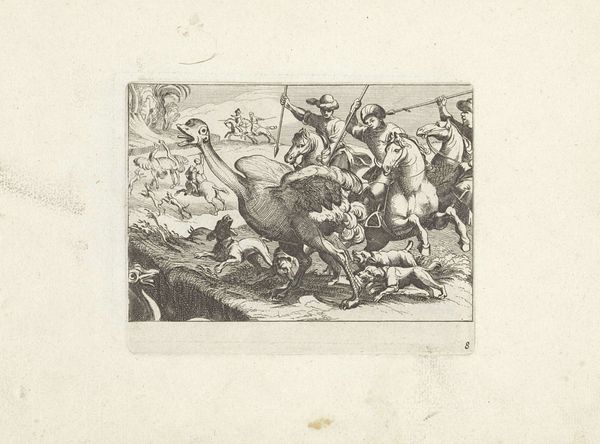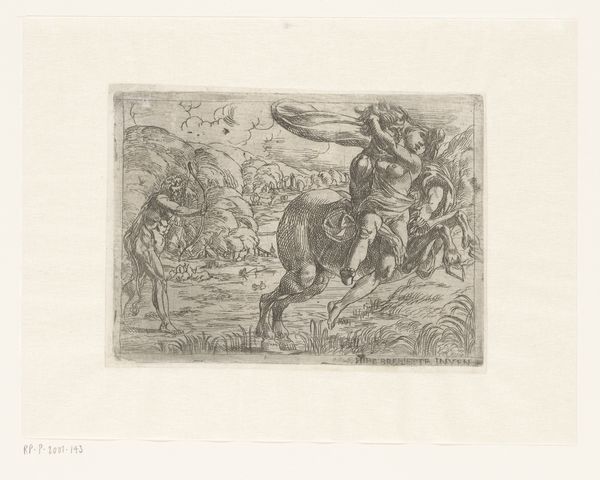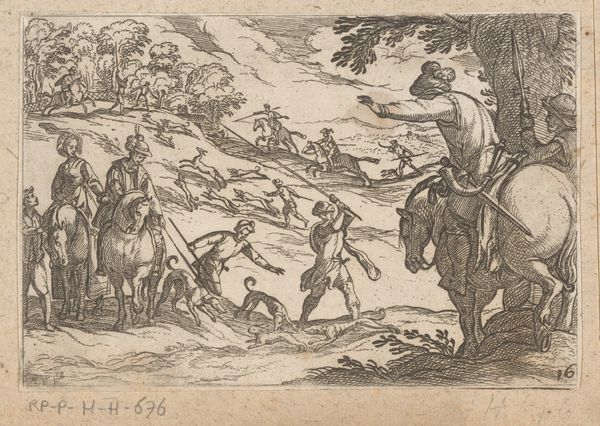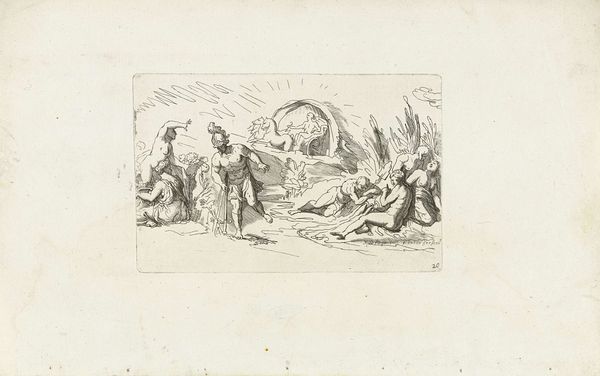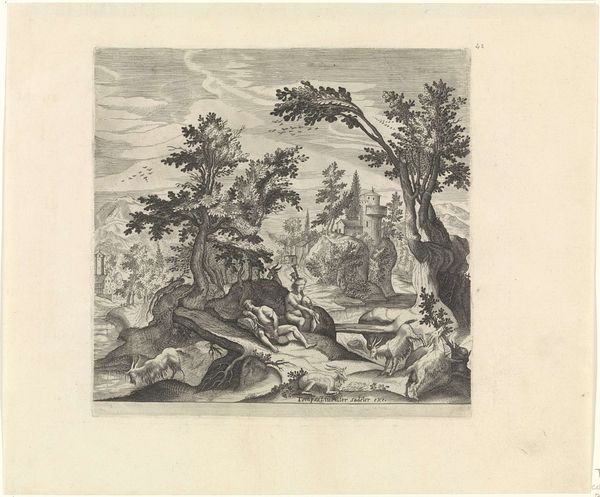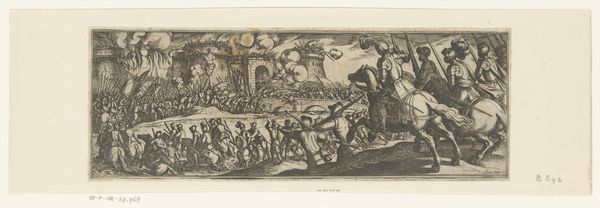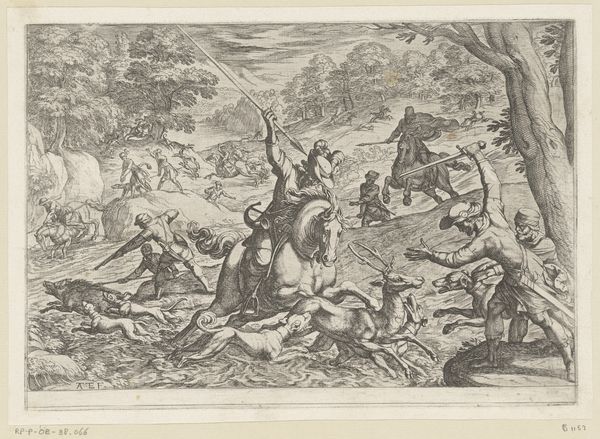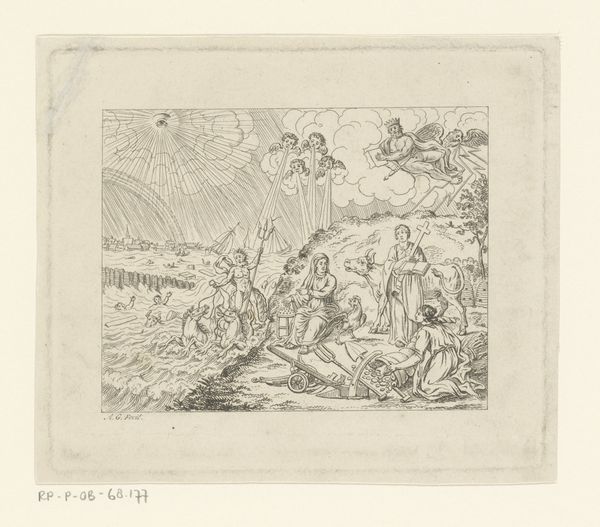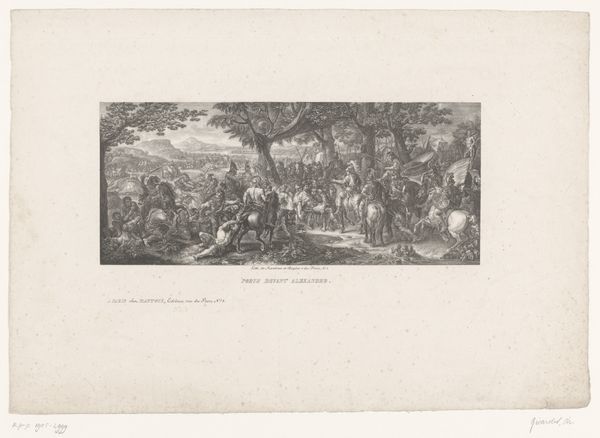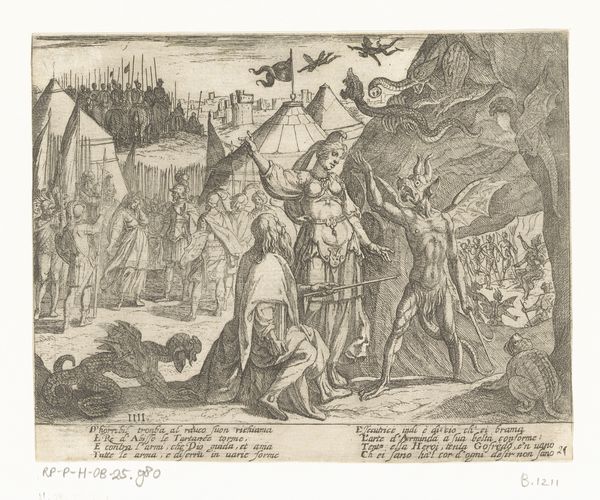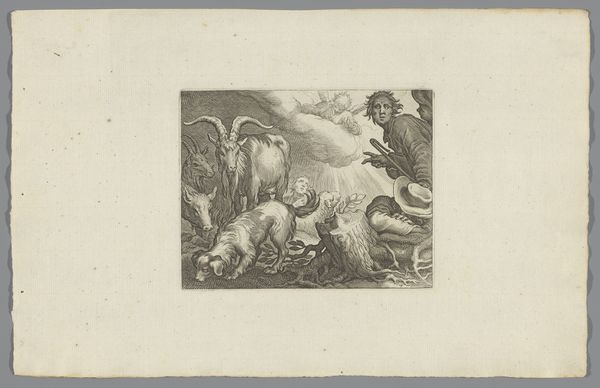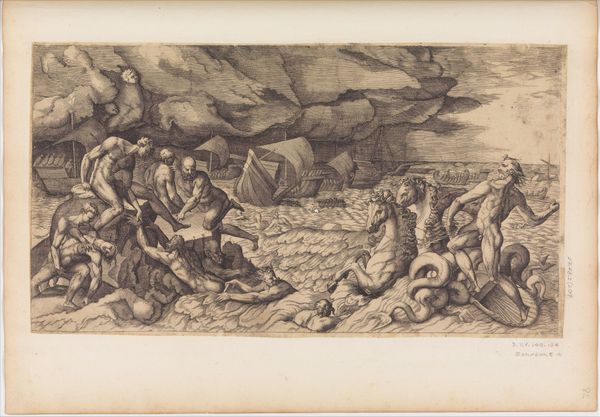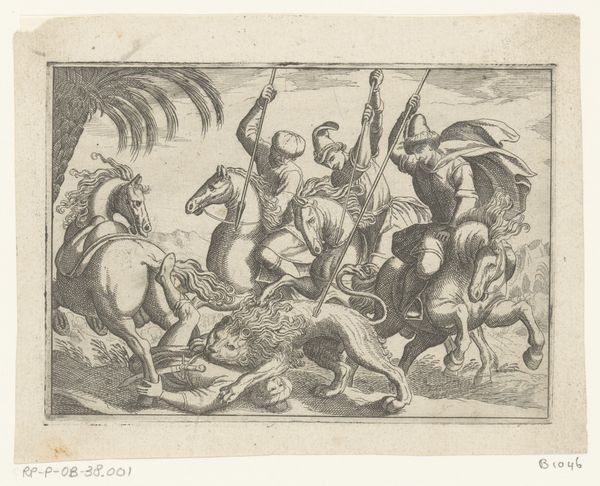
#
comic strip sketch
#
light pencil work
#
old engraving style
#
personal sketchbook
#
idea generation sketch
#
sketchwork
#
sketchbook drawing
#
pencil work
#
storyboard and sketchbook work
#
sketchbook art
Dimensions: height 94 mm, width 120 mm
Copyright: Rijks Museum: Open Domain
Editor: We’re looking at "Hazenjacht," or Hare Hunting, an etching from 1624. The artist is anonymous, and it's currently housed at the Rijksmuseum. It's very detailed! The hunting scene feels almost chaotic, and it’s hard to grasp what exactly is happening. What stands out to you in this piece? Curator: The frantic energy you mention is key. It points to a specific system of labor. We aren’t just looking at aristocratic leisure, but also the labor involved in procuring the materials, the animals, the training of the dogs, and even the very paper the print is made on. Notice how the landscape itself becomes a stage for this display of power and consumption. Editor: Consumption, interesting. It seems far removed from, say, agriculture or sustenance. Is the hunting here a luxury good itself? Curator: Exactly. Etchings like this weren’t necessarily "art" in the high-art sense then. They were commodities produced for a specific market – a market eager to consume images of aristocratic life, regardless of its reality. Consider the etcher’s own labor, translating the hunt into a reproducible image for wider consumption. What materials did the artist have at hand? Editor: Presumably etching tools, paper, ink, and acids… nothing too fancy, probably? It seems more industrial. Curator: Precisely. It highlights how art practices were deeply interwoven with broader economic and social structures. It moves us to challenge the hierarchy of artistic disciplines themselves. The making is labor. And labor means we can also assess power. Editor: I never thought about approaching art from that point of view; seeing it less as a window into a soul and more as a product of material conditions. I'll remember that in my own work. Curator: Remembering art's situatedness will hopefully prompt us to examine our own conditions, both present and past, when engaging with creative endeavors.
Comments
No comments
Be the first to comment and join the conversation on the ultimate creative platform.
